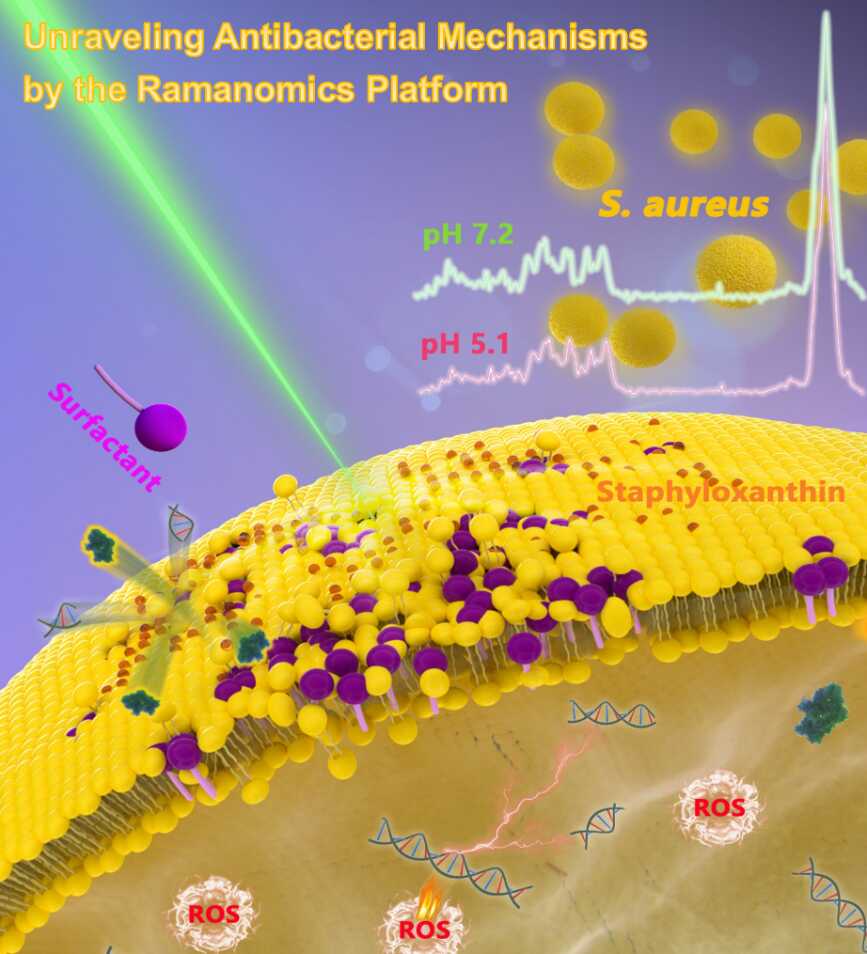Researchers Uncover Antibacterial Mechanisms of Cationic and Anionic Surfactants against Staphylococcus Aureus
A collaborative research team led by the Qingdao Institute of Bioenergy and Bioprocess Technology (QIBEBT) of the Chinese Academy of Sciences has uncovered the antibacterial mechanisms of cationic and anionic surfactants against Staphylococcus aureus using single-cell Raman spectroscopy (SCRS) in a multi-dimensional approach.
Published in Analytical Chemistry, this study provides insights into how widely used surfactants exhibit antibacterial properties, paving the way for improved formulations in personal care, medical, and industrial applications.
Surfactants are key components in various household and personal care products, valued for their cleaning, emulsifying, and disinfecting capabilities. They are broadly categorized into four main types: cationic, anionic, amphoteric, and nonionic, each possessing unique antimicrobial properties.
Cationic surfactants, such as benzalkonium chloride (BAC), are recognized for their strong antimicrobial effects. In contrast, the mechanisms by which anionic surfactants, like sodium dodecyl sulfate (SDS) and sodium oleyl sulfate (SOS), combat bacteria are not as well understood. Their effectiveness can vary based on environmental pH and the length of their alkyl chains, making it essential to investigate their interactions with bacterial cell membranes.
The study utilized SCRS, a label-free and non-invasive technique that delivers detailed metabolic information at the single-cell level. By analyzing the Raman spectra of S. aureus cells treated with different surfactants under various pH conditions, the researchers tracked dynamic changes in cellular components, including nucleic acids, proteins, lipids, and cytochrome, as well as oxidative stress biomarkers.
The team examined thousands of Raman spectra from individual S. aureus cells, identifying biomarkers such as staphyloxanthin (a bacterial antioxidant) and S=O bonds to map the dynamics of oxidative stress. This approach is label-free, high-throughput, and applicable to other pathogens.
"Ramanomics bridges the gap between surfactant chemistry and bacterial response," said Prof. ZHENG Xiaoshan, the study's first author. "This live single-cell-based, mechanism-revealing tool can be a game-changer for developing next-generation antimicrobial agents."
This study emphasizes the potential of ramanomics as a powerful method for revealing the antibacterial mechanisms of surfactants. By providing insight into the molecular interactions between surfactants and microbes, it lays the groundwork for the design of safer and more effective antibacterial solutions.

Unraveling antibacterial mechanisms of surfactants against S. aureus via single-cell raman spectroscopy (Image by WAGN Ting)